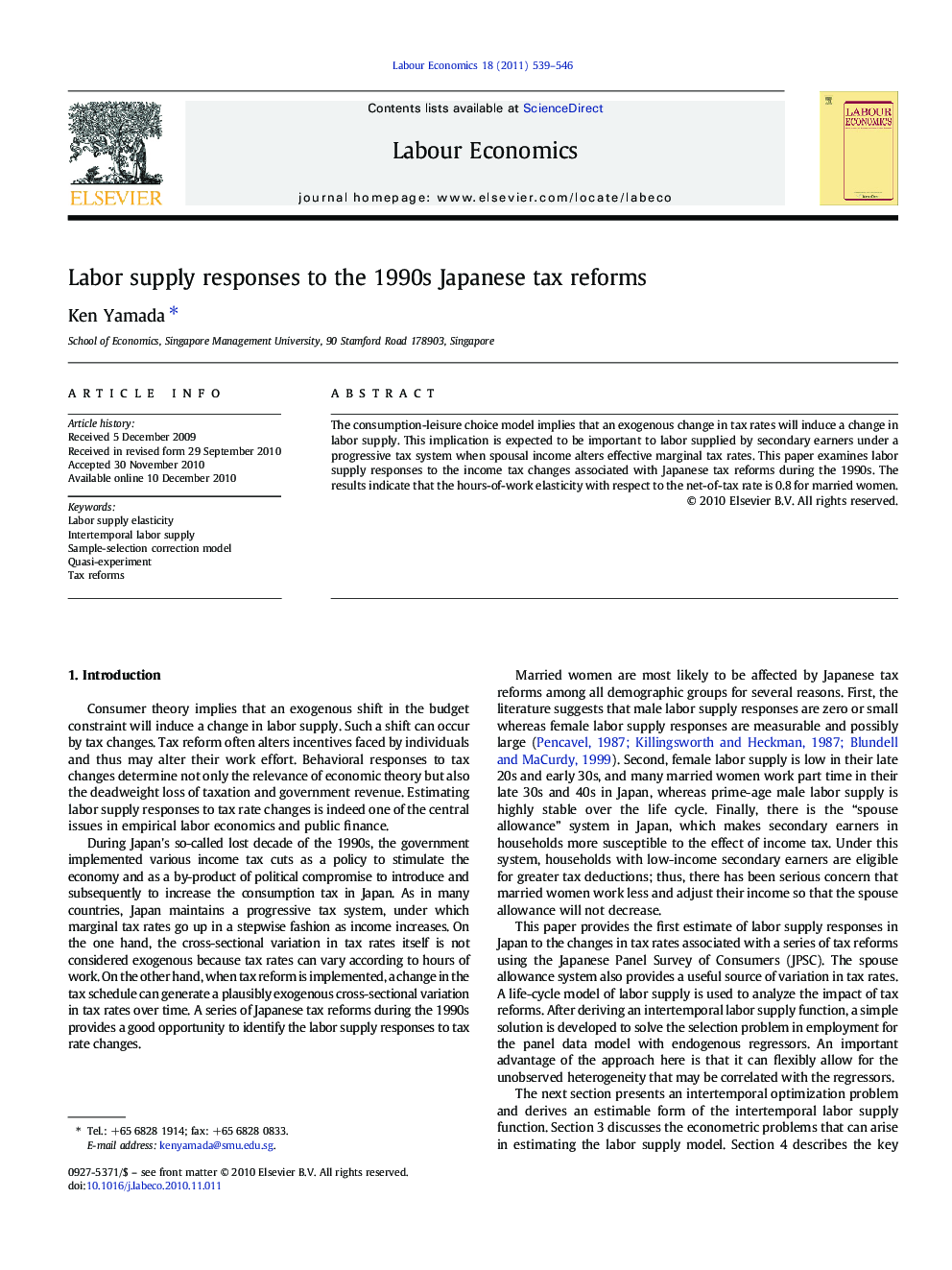| Article ID | Journal | Published Year | Pages | File Type |
|---|---|---|---|---|
| 972807 | Labour Economics | 2011 | 8 Pages |
The consumption-leisure choice model implies that an exogenous change in tax rates will induce a change in labor supply. This implication is expected to be important to labor supplied by secondary earners under a progressive tax system when spousal income alters effective marginal tax rates. This paper examines labor supply responses to the income tax changes associated with Japanese tax reforms during the 1990s. The results indicate that the hours-of-work elasticity with respect to the net-of-tax rate is 0.8 for married women.
Graphical AbstractFigure optionsDownload full-size imageDownload as PowerPoint slideResearch Highlights► This paper examines labor supply responses to the changes in tax rates associated with a series of tax reforms that are implemented during the 1990s in the presence of the “spouse allowance” system in Japan. ► The paper uses a life-cycle model of labor supply to analyze the impact of tax reforms and develops a simple solution to the selection problem in employment for the panel data model with endogenous regressors. ► The results point to non-negligible disincentive effects of taxation on married women’s labor supply.
